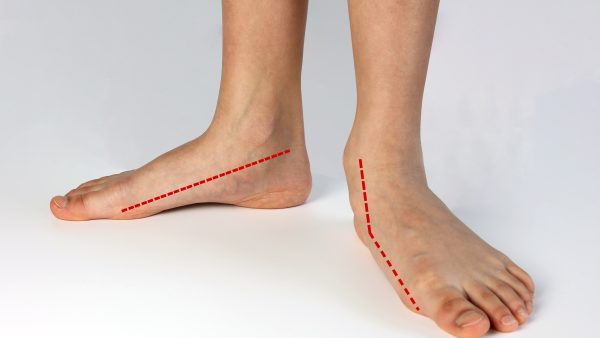Looking for Expert-Level VA Claim Answers?📱Call Us Now! 737-295-2226
In this guide, I’ll explain the 3 best ways to get a VA rating for flat feet. I’ll also provide some expert-level tips for your flat feet C&P exam.
Many veterans suffer from various foot conditions, including pes planus (more commonly known as flat feet) and plantar fasciitis, and are seeking to service connect their disabilities for VA benefits.
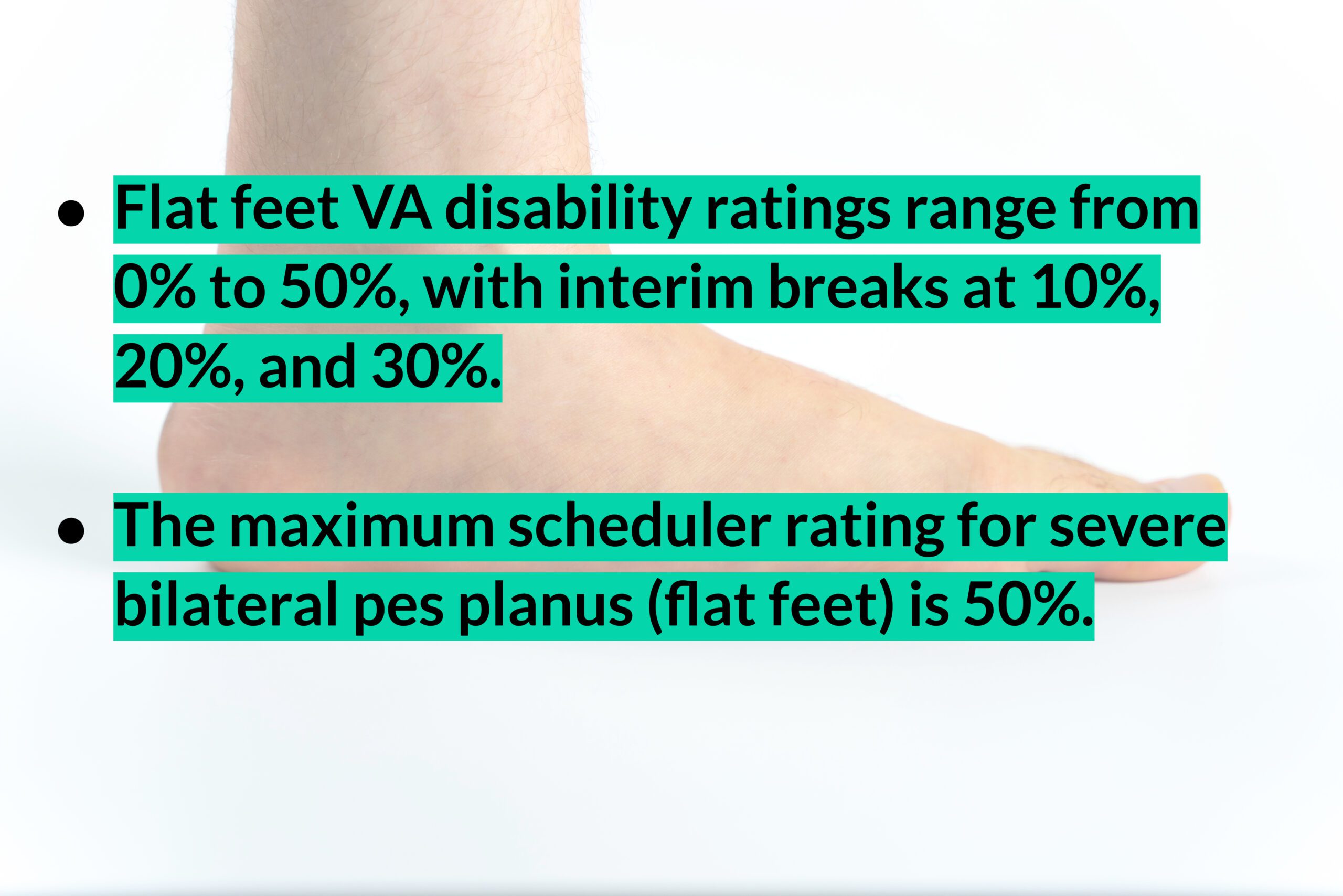
Flat feet VA disability ratings range from 0 percent to 50 percent, with interim breaks at 10 percent, 20 percent, and 30 percent.
The maximum scheduler rating for severe bilateral pes planus (flat feet) is 50 percent.
Your final VA rating for pes planus depends upon whether the condition is unilateral or bilateral, as well as the severity of your symptoms in terms of frequency, severity, and duration.
Okay, let’s jump into how to get your pes planus rated for VA disability purposes.
- What are Flat Feet (Pes Planus) in Veterans?
- How to Service Connect Your Flat Feet for VA Disability
- How to Get a VA Rating for Flat Feet
- What are the Flat Feet VA Disability Ratings?
- 50 Percent Flat Feet VA Rating (Bilateral)
- 30 Percent VA Rating for Pes Planus (Unilateral)
- 30 Percent VA Disability Rating for Flat Feet (Bilateral)
- 20 Percent VA Rating for Pes Planus (Unilateral)
- 10 Percent Pes Planus VA Rating (Bilateral or Unilateral)
- 0 Percent VA Rating for Flat Feet (Bilateral or Unilateral)
- Flat Feet Claim Denied?
- What is the Pain Motion Principle for Flat Feet?
- List of VA Secondary Conditions to Flat Feet
- Can I Get a VA Disability Rating for Flat Feet and Plantar Fasciitis?
- What Should I Expect at a Flat Feet VA C&P Exam?
- About the Author
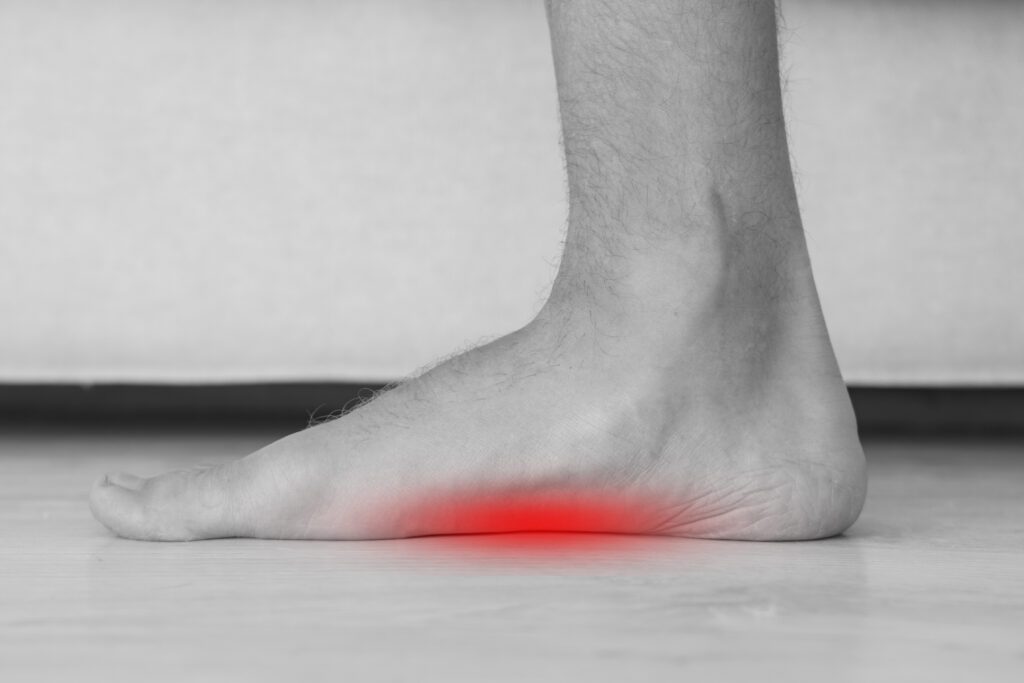
What are Flat Feet (Pes Planus) in Veterans?
Veterans have flat feet when they have little to no arch (flattened foot), which lets the entire sole of one or both feet touch the ground when standing or walking.
Flat feet are a common condition that’s usually painless; however, they can become painful over time due to overuse, obesity, running, military combat boots, or wearing poor insoles.
Keep in mind flat feet can also develop after an injury or from everyday wear-and-tear, such as military service. Also note that you might have entered military service with flat feet, which is known as a “pre-service disability.”
Many veterans have flat feet aggravated by military service (beyond their natural progression), in which case, you’re eligible for a VA rating for flat feet based upon “aggravation of a pre-service disability,” assuming you have medical evidence showing that your flat feet worsened over time.
Flat feet can also cause problems in your ankles, knees, hips, and back because the condition can change the alignment of your legs—these are all common secondary conditions for secondary service connection.
There are several risk factors for flat feet, including obesity, injuries to your foot or ankles, rheumatoid arthritis, aging, and diabetes.

How to Service Connect Your Flat Feet for VA Disability
To get your VA claim for flat feet approved, you need to prove 3 essential elements:
- #1. Medical diagnosis of flat feet. This can be in Service Treatment Records (STRs), VA medical records, OR any private records, but it needs to be in a medical record. It does help to have a “current” medical diagnosis of pes planus within the past 12 months, although it’s not required.
- #2. Your flat feet were caused or made worse by your ACTIVE-DUTY military service (“Nexus”) OR it’s proximately due to or aggravated by ANOTHER service-connected disability rated at 0% or higher for secondary service connection.
- #3. Current symptoms of flat feet, which we call “Severity of Symptoms.” How severe are your symptoms, and how are your flat feet negatively impacting your work, life, and social functioning? Also, think about “Functional Impairment” or “Economic Loss” due to the severity of your flat feet.
If you think you have a foot disorder such as pes planus (flat feet) but don’t have a medical diagnosis, pick up the phone and call the VA facility nearest you to make an appointment right away.
You’ll likely be referred from your Primary Care Doctor to a Podiatrist, who is a medical professional who specializes in the treatment of disorders of the foot, ankle, and related structures of the leg.
If you’re trying to increase your VA disability rating for flat feet, you need to prove to the VA that your symptoms are now worse and warrant the higher rating criteria by law.
The #1 best way to increase your VA rating for pes planus is to have objective medical evidence that shows how your symptoms have worsened over time.
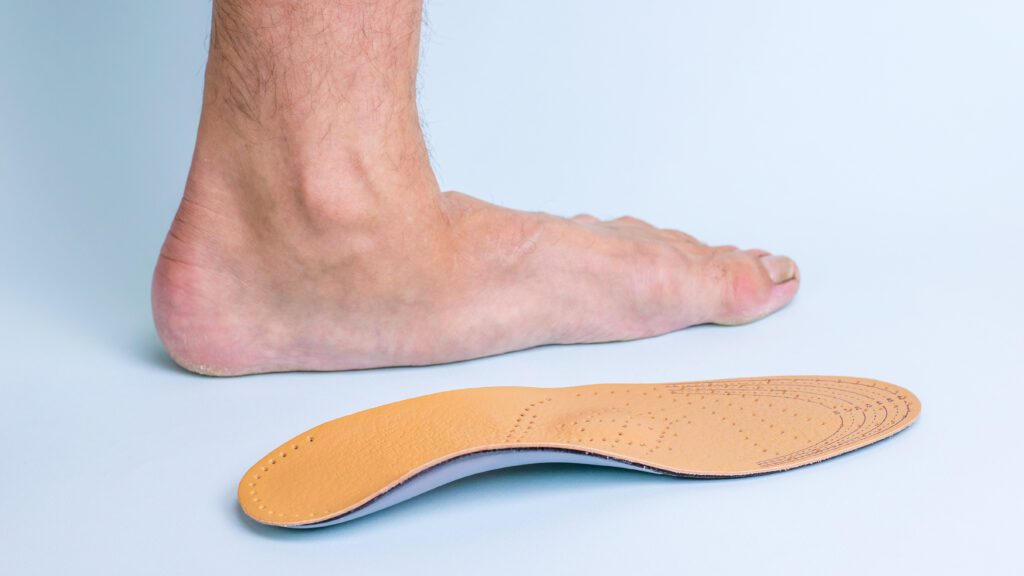
How to Get a VA Rating for Flat Feet
There are three primary ways a veteran can get a flat feet VA rating:
- Direct Service Connection for Flat Feet rated either unilateral or bilateral, with VA ratings of 0%, 10%, 20%, 30%, or 50%.
- Secondary Service Connection for Flat Feet rated either unilateral or bilateral, with VA ratings of 0%, 10%, 20%, 30%, or 50%. For instance, a veteran could be rated for Flat Feet secondary to Ankle Pain.
- Aggravation of a Pre-Service Disability for Flat Feet rated either unilateral or bilateral, with VA ratings of 0%, 10%, 20%, 30%, or 50%. For example, a veteran could be rated for Flat Feet due to aggravation of a pre-service disability. This means you had the condition before you joined the military, but your military service aggravated your flat feet beyond their natural progression.
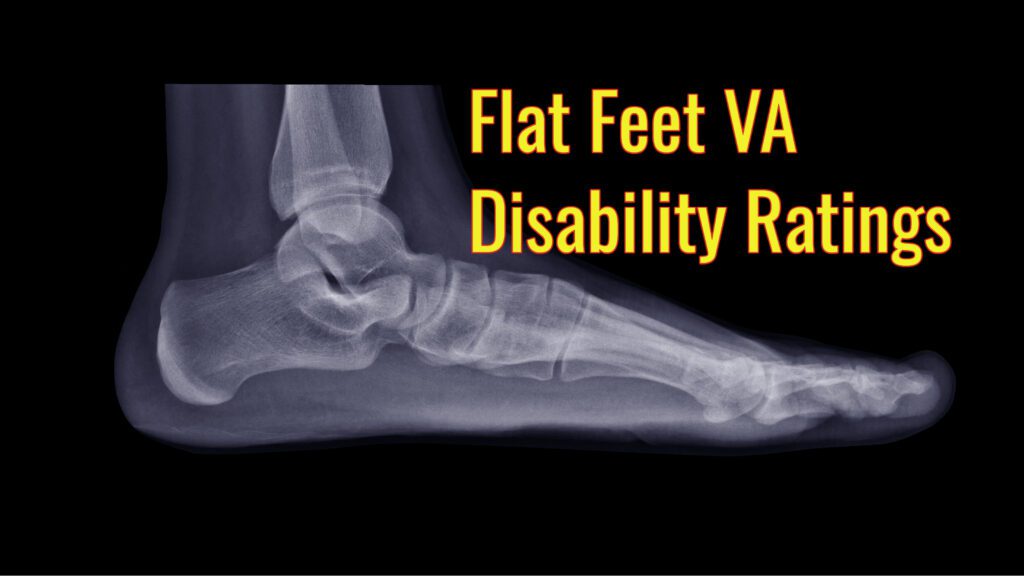
What are the Flat Feet VA Disability Ratings?
The VA rates flat feet using Title 38 CFR, Part 4, Schedule for Rating Disabilities, Diagnostic Code (DC) 5276, Flatfoot, Acquired.
Flat feet VA disability ratings range from 0% to 50%, with interim breaks at 10%, 20%, and 30% depending upon unilateral or bilateral and the severity of your symptoms in terms of frequency, severity, and duration.
50 Percent Flat Feet VA Rating (Bilateral)
The 50 percent VA rating is appropriate for severe bilateral flat feet pronounced with marked pronation, extreme tenderness of plantar surfaces of the feet, marked inward displacement, and severe spasm of the tendo achillis on manipulation, not improved by orthopedic shoes or appliances.
30 Percent VA Rating for Pes Planus (Unilateral)
The 30 percent VA rating is appropriate for severe unilateral flat feet pronounced with marked pronation, extreme tenderness of plantar surfaces of the feet, marked inward displacement, and severe spasm of the tendo achillis on manipulation, not improved by orthopedic shoes or appliances.
30 Percent VA Disability Rating for Flat Feet (Bilateral)
The 30 percent rating for pes planus is appropriate for bilateral flat feet with objective evidence of marked deformity (pronation, abduction, etc.), pain on manipulation and use accentuated, indication of swelling on use, characteristic callosities (yellow calluses). The photo below is an example of yellow calluses and cracking of the heel.
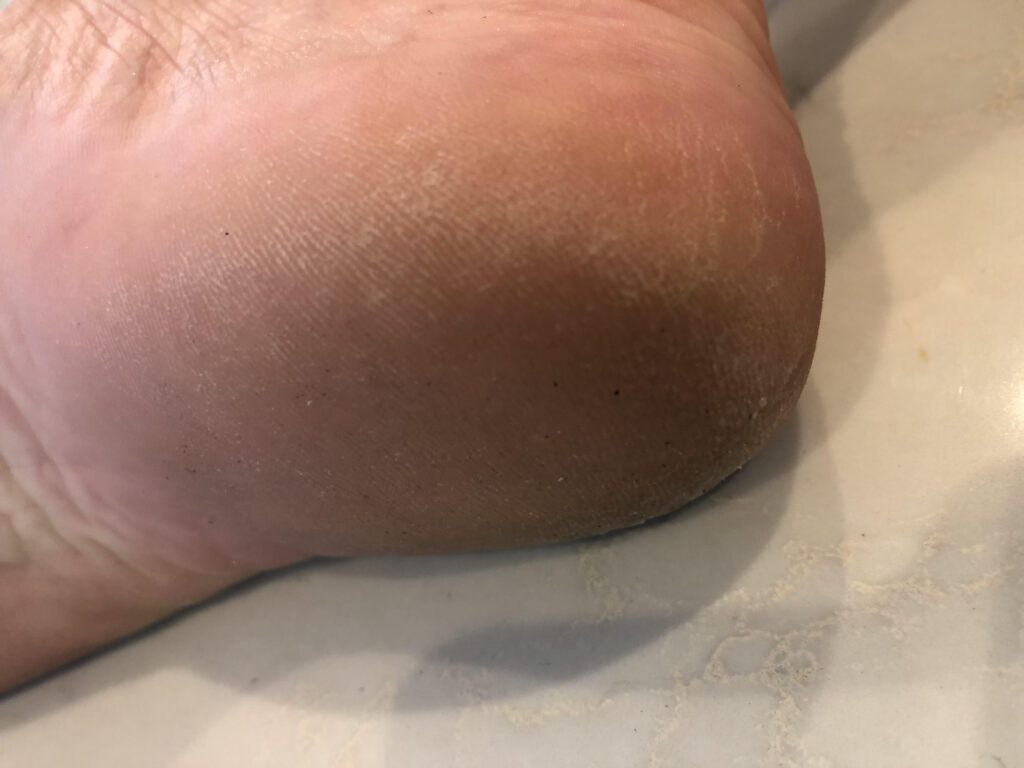
20 Percent VA Rating for Pes Planus (Unilateral)
The 20 percent rating for flat feet is appropriate for unilateral pes planus with objective evidence of marked deformity (pronation, abduction, etc.), pain on manipulation and use accentuated, indication of swelling on use, characteristic callosities (yellow calluses).
10 Percent Pes Planus VA Rating (Bilateral or Unilateral)
The 10 percent VA rating for pes planus is appropriate for moderate symptoms such as weight-bearing line over or medial to great toe, inward bowing of the tendo achillis, pain on manipulation and use of the feet, bilateral or unilateral.
0 Percent VA Rating for Flat Feet (Bilateral or Unilateral)
The 0 percent VA disability rating for flat feet is appropriate for mild symptoms relieved by built-up shoe or arch support.
Flat Feet Claim Denied?
Receiving a denied claim when you feel you are owed VA disability benefits is highly discouraging. However, if you have your flat feet claim denied—don’t give up. If you deserve VA disability for flat feet—you still have options, including:
- File a Supplemental Claim if you have new and relevant evidence that you didn’t have before your case was reviewed.
- Ask for a Higher-Level Reviewer to review your case. (New evidence can’t be submitted)
- Appeal to the Board of Veterans’ Appeals and have a Veterans Law Judge review your case.
You shouldn’t wait to file your appeal if you suffer from severe symptoms from pes planus flat feet. Remember, if you served, you deserve.
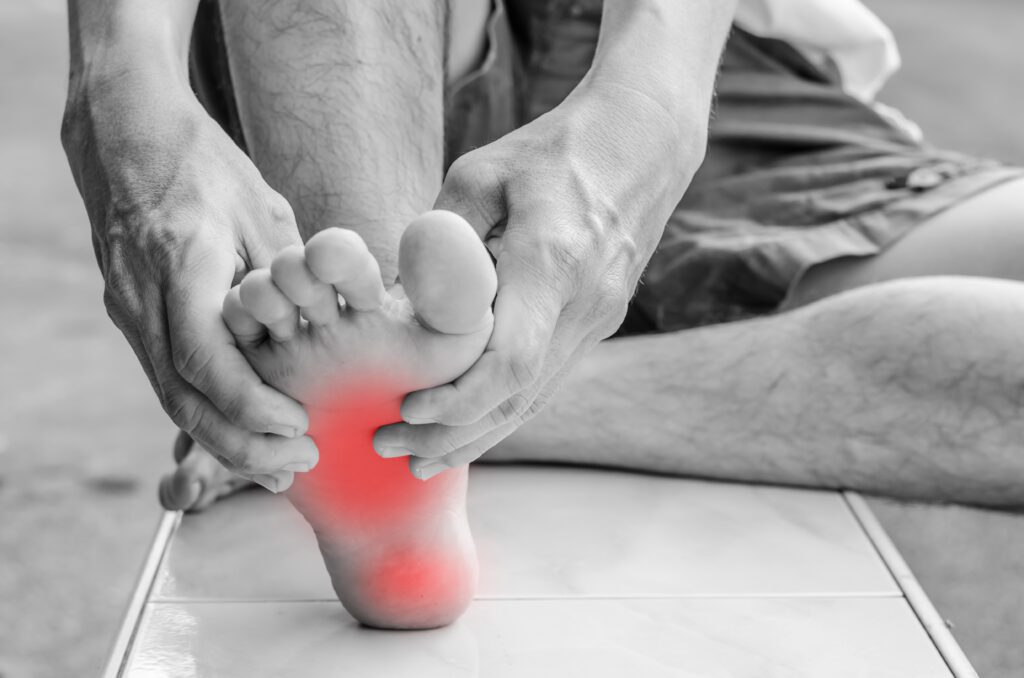
What is the Pain Motion Principle for Flat Feet?
The painful motion principle means that regardless of range of motion, if pain is present, the veteran should at least be awarded the minimum level of compensable disability for that condition.
For example, let’s say you have full range of motion for your flat feet and no functional impairment or loss, but you have pain during movement, then you should be awarded the minimum level of disability for pes planus, which is 10%.

List of VA Secondary Conditions to Flat Feet
In veterans with symptoms, there may be complaints of the midfoot, heels, lower legs, knees, hips, and or back pain, which can all be linked and rated as secondary conditions to flat feet.
Other conditions linked to flat feet in a bi-directional relationship include leg length differences, pregnancy, Marfan’s syndrome, rheumatoid arthritis, and scoliosis, obesity, injuries to your foot or ankles, and diabetes.
List of Common Conditions Secondary to Flat Feet
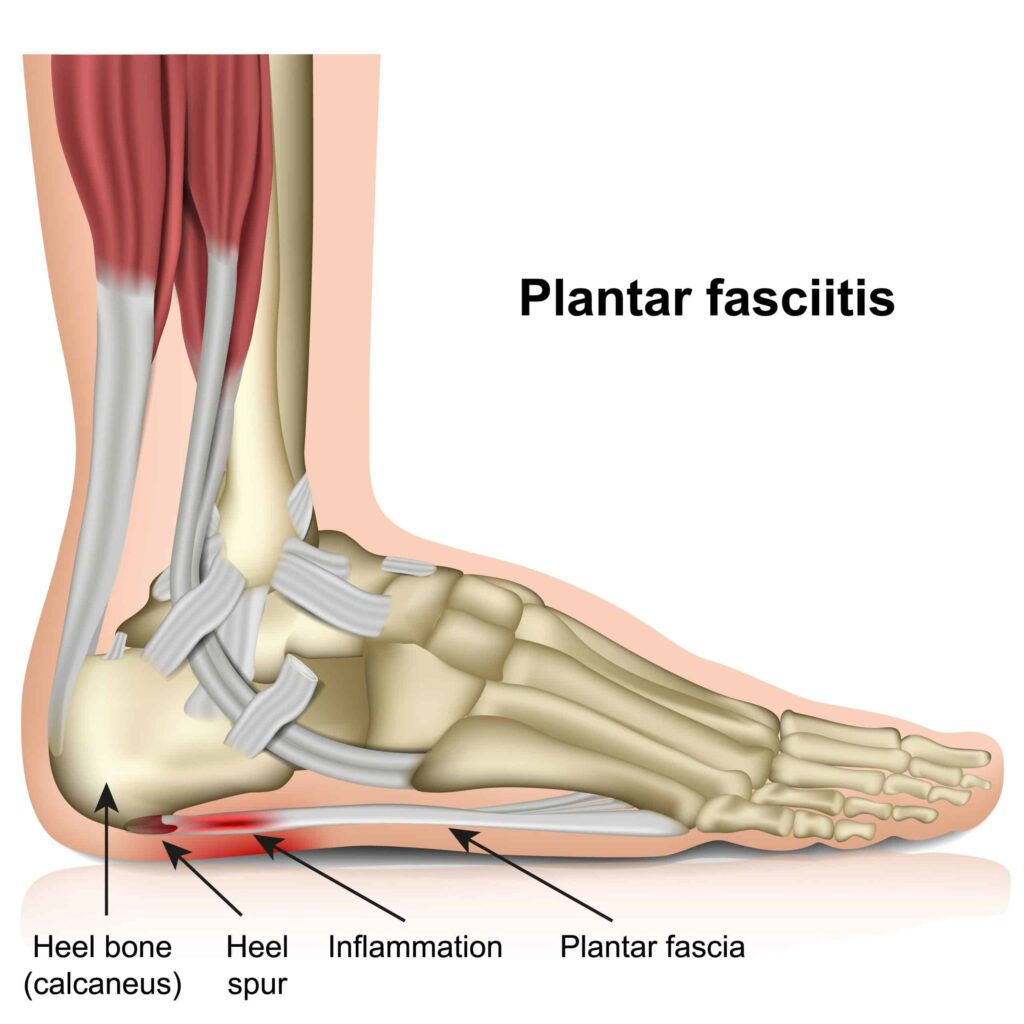
Can I Get a VA Disability Rating for Flat Feet and Plantar Fasciitis?
The VA rates Pes Planus (Flat Feet) using Title 38 CFR, Part 4, Schedule for Rating Disabilities, Diagnostic Code (DC) 5276, Flatfoot versus Plantar Fasciitis, which is rated under DC 5269.
The highest scheduler rating for severe bilateral flat feet is 50%, whereas the highest scheduler rating for severe bilateral plantar fasciitis is 30%.
Because the symptoms associated with flat feet and plantar fasciitis are so similar, it’s highly unlikely to get separate VA ratings for flat feet and plantar fasciitis due to the avoidance of pyramiding.
However, if a veteran has both conditions diagnosed, with similar symptoms for each disability, according to the “higher of two evaluations” principle, the higher rating will be assigned if the disability picture more nearly approximates the criteria required for that rating.
For example, if you have both severe bilateral flat feet and severe bilateral plantar fasciitis, the VA Rater should grant the 50% rating for pes planus because it’s the higher of the two ratings (the maximum scheduler rating for severe bilateral plantar fasciitis is 30%).
You DESERVE a HIGHER VA rating.
Take advantage of a VA Claim Discovery Call with an experienced Team Member. Learn what you’ve been missing so you can FINALLY get the disability rating and compensation you’ve earned for your service.

What Should I Expect at a Flat Feet VA C&P Exam?
A C&P exam for flat feet involves a physical examination of the feet for tenderness, swelling, calluses, pain, and functional impairment or loss, as well as a walking test for overpronation.
Sometimes, the C&P examiner will order X-rays of one or both feet to check for foot deformities such as calcified heel spurs.
The following 24 questions will be answered by the C&P examiner on the electronic version of the Disability Benefits Questionnaire for Foot Conditions, Including Flatfoot (Pes Planus).
1. Does the Veteran have pain on use of the feet?
If yes, indicate the side(s) affected and if the pain is accentuated on use.
2. Does the Veteran have pain on manipulation of the feet?
If yes, indicate the side(s) affected and if the pain is manipulated on use.
3. Is there an indication of swelling on use?
If yes, indicate the side(s) affected.
4. Does the Veteran have characteristic calluses?
If yes, indicate the side(s) affected.
5. Does the Veteran use arch supports or built-up shoes?
If yes, indicate the effect of symptoms and if the veteran receives relief in one or both sides of the foot.
6. Does the Veteran have extreme tenderness of plantar surfaces on one or both feet?
If yes, indicate the side(s) affected.
7. Is the tenderness improved by orthopedic shoes or appliances?
If yes, indicate the side(s) affected.
8. Does the Veteran have decreased longitudinal arch height of one or both feet on weight-bearing?
If yes, indicate the side(s) affected.
9. Is there objective evidence of marked deformity of one or both feet (pronation, abduction, etc.)?
If yes, indicate the side(s) affected.
10. Is there marked pronation of one foot or both feet?
If yes, indicate the side(s) affected.
11. Is the condition improved by orthopedic shoes or appliances?
If yes, indicate the side(s) affected.
12. For one or both feet, is the weight-bearing line over or medial to the great toe?
If yes, indicate the side(s) affected.
13. Is there a lower extremity deformity other than pes planus causing alteration of the weight-bearing line?
If yes, indicate the side(s) affected and describe the lower extremity deformity other than pes planus causing alteration of the weight-bearing line.
14. Does the Veteran have “inward” bowing of the Achilles’ tendon (i.e., hindfoot valgus, with lateral deviation of the heel) of one or both feet?
If yes, indicate the side(s) affected.
15. Does the Veteran have marked inward displacement and severe spasm of the Achilles’ tendon (rigid hindfoot) on manipulation of one or both feet?
If yes, indicate the side(s) affected.
16. Is the marked inward displacement and severe spasm of the Achilles tendon improved by orthopedic shoes or appliances?
If yes, indicate the side(s) affected.
17. Does the Veteran have any “Functional Loss” due to his/her flat feet?
The VA defines functional loss as the “inability, due to damage or infection in parts of the system, to perform normal working movements of the body with normal excursion, strength, speed, coordination and/or endurance.”
As regards to the joints, factors of disability reside in reductions of their normal excursion of movements in different planes.
Using information based on a review of all procurable information, to include the Veteran’s statement on examination, case-specific evidence (to include medical treatment records when applicable and lay evidence), the examiner’s medical expertise, and physical exam, select the factors below that contribute to functional loss or impairment (regardless of repetitive use) or to additional limitation of range of motion (ROM) after repetitive use for the joint or extremity being evaluated on this Disability Benefits Questionnaire for Flat Feet:
- No functional loss for left lower extremity attributable to claimed condition
- No functional loss for right lower extremity attributable to claimed condition
- Less movement than normal
- More movement than normal
- Weakened movement
- Swelling
- Deformity
- Atrophy of disuse
- Instability of station
- Disturbance of locomotion
- Interference with sitting
- Interference with standing
- Pain
- Fatigue
- Weakness
- Lack of endurance
- Incoordination
- Other, describe:
18. Does procured evidence (statements from the Veteran) suggest pain, fatigability, weakness, lack of endurance, or incoordination, which significantly limits functional ability during flare-ups and/or after repeated use over time?
If yes, indicate the side(s) affected.
If yes, (there is a functional loss due to pain, during flare-ups and/or after repeated use over time), please describe the functional loss as well as cite and discuss evidence (must be specific to the case and based on all procurable evidence).
19. Is there any other functional loss during flare-ups and/or after repeated use over time?
If yes, indicate the side(s) affected.
20. Is there evidence of pain on any of the following?
- Passive motion
- Active motion
- Weight-bearing
- Non-weight-bearing
- On rest/non-movement
If yes, indicate the side(s) affected.
21. Has Diagnostic Testing been performed?
Note: Diagnostic Testing is not necessary for every condition. Plain or weight-bearing foot x-rays are not required to make the diagnosis of flatfoot. The diagnosis of degenerative arthritis (osteoarthritis) or post-traumatic arthritis must be confirmed by imaging studies. Once such arthritis has been documented, even if in the past, no further imaging studies are required by VA, even if arthritis has worsened.
22. Have imaging studies been performed in conjunction with this examination?
If yes, provide type of test or procedure, date, and results.
23. Does the Veteran have “Functional Impact” to their work, life, and social functioning?
Note: Provide the impact of only the diagnosed condition(s), without consideration of the impact of other medical conditions or factors, such as age.
24. Regardless of the Veteran’s current employment status, do the condition(s) listed in the diagnosis section impact his or her ability to perform any type of occupational task (such as standing, walking, lifting, sitting, etc.)?
If yes, describe the functional impact of each condition, providing one or more examples.
About the Author

Brian Reese
Brian Reese is a world-renowned VA disability benefits expert and the #1 bestselling author of VA Claim Secrets and You Deserve It. Motivated by his own frustration with the VA claim process, Brian founded VA Claims Insider to help disabled veterans secure their VA disability compensation faster, regardless of their past struggles with the VA. Since 2013, he has positively impacted the lives of over 10 million military, veterans, and their families.
A former active-duty Air Force officer, Brian has extensive experience leading diverse teams in challenging international environments, including a combat tour in Afghanistan in 2011 supporting Operation ENDURING FREEDOM.
Brian is a Distinguished Graduate of Management from the United States Air Force Academy and earned his MBA from Oklahoma State University’s Spears School of Business, where he was a National Honor Scholar, ranking in the top 1% of his class.


